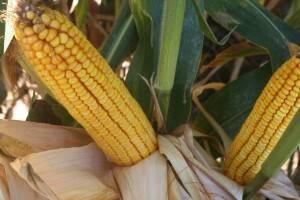There are literally a thousand variables that affect how good of a crop you raise. Many of these variables, like the weather, are out of your control. So why not control the ones you can?
The decisions you make now can influence yield before any seed goes in the ground. That’s why I’m sharing the factors I believe you can control to produce the best corn yields in the year ahead:
any seed goes in the ground. That’s why I’m sharing the factors I believe you can control to produce the best corn yields in the year ahead:
- Hybrid Selection. Selecting the right hybrid for a given field / soil type is probably the most important decisions a farmer makes. That’s why at Latham Hi‑Tech Seeds, we have developed a FieldXFieldTM worksheet to guide our customers through a proven process.
- Seedbed Preparation / Planting Date. Remember that early planting dates only have the potential to out-yield later plantings if conditions are right. Wait to plant until soil temps are consistently above 50° F and are expected to rise. Don’t “mud it in” just to be the first one in the field! Yield doesn’t significantly decline until later in the planting season, so practice patience.
- Planting Depth.The optimal planting depth for corn is 2 inches – for good reasons. If you plant to shallow, corn plants may germinate too quickly and then shut down if ground temperatures drop. Shallow planting also prohibits plants from developing the root system needed for plant health or stalk strength. If you plant too deep, emergence may be delayed.
- Planting Speed. While racing against time, some farmers have a tendency to plant at too high of speed. Planting speed affects the accuracy of seed placement, so travel between 4 and 5 miles per hour to encourage the best seed-to-soil contact.
- Soil Fertility. Accurate soil samples are necessary, so you can be sure the plants are getting the food they need. There are 16 essential nutrients for plant development, and each one is important in various amounts. A proper balance of macro- and micro-nutrients is necessary for optimal performance. Keep in mind that starter fertilizer, put down at planting time, can help get the crop off a quick start.
